Cefn Coch Background
Cefn Coch Farm is a small upland farm of about 40 acres, nestling in a secluded valley in the Cambrian Mountains.
Having never been particularly ‘modernised’ with the introduction of intensive management, and surrounded by semi-natural habitats, it retains lots of natural features and biodiversity. This makes it an ideal place to practice low-intensity, nature-friendly farming.
Joe Hope moved to Cefn Coch Farm 7 years ago from Scotland where he worked as an ecologist specialising in lichens. Before making any major changes, he observed and studied the property and the area around it, looking particularly at the ecology and history of land use.
He discovered a setting abundant in wildlife, with one of the county’s top lichen habitats located in woodland just down the valley. There were many trees and shrubs of a range of ages and species on the farm, not only in the riparian woodands, but also within the fields.
Intermixed trees and pasture, known as wood pasture or sylvopasture, has become increasingly rare as farming has become more mechanised, but scientists and farmers are now realising that there are many benefits to these kinds of systems. Since 2017 Cefn Coch Farm has been managed intentionally as agroforestry.
A crucial part of any sylvopastoral system is the grazing livestock. The farm currently has a growing herd of 24 head of cattle.
The breeding cows are a mixture of Highland and Welsh White. These breeds were chosen for a number of reasons. They perform well enough on poor pasture, so there’s no pressure to add fertilisers, which would reduce the grassland’s conservation value. They contentedly stay outside all winter and eat the grass as it grows.
Highlanders are one of the breeds that are most frequently used for conservation grazing, promoting biodiversity but Welsh Whites are a locally native breed that has similar potential.
In order to restore some areas for grazing, 4 saddleback x wild boar pigs have been used to clear bracken and brambles.

Cefn Coch in the Dolau Dyfi Project
Dolau Dyfi has been instrumental in Increasing the diversity of acid grassland plant species, especially wild flower species, through cattle grazing,
Establishing boundary hedgerows, and reducing bracken cover were the site’s top priorities. The project funded the installation of new infrastructure, including three access gates and an electric fence that will remain in place.
In order to complete the cattle handling facilities, additional gates were also installed.
Cattle grazing is used as a way of trampling bracken and graze all year round using a rotational grazing system. Rotational grazing is a method of controlled grazing where animals are relocated to new grass after grazing in one place for a certain period of time.
The stock will receive a continuous supply of high-quality grass by having various grazing areas or paddocks before going back to the initial one.
The area is monitored throughout the year for the appearance of new flora and to identify species that have been encouraged to grow because of the methods of conservation used at Cefn Coch Farm.


